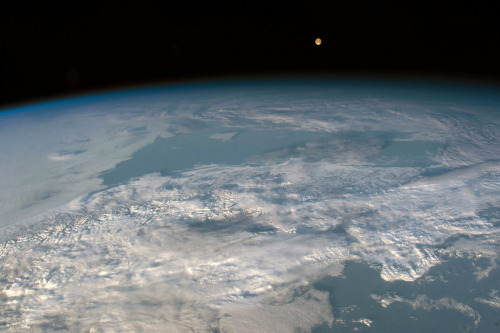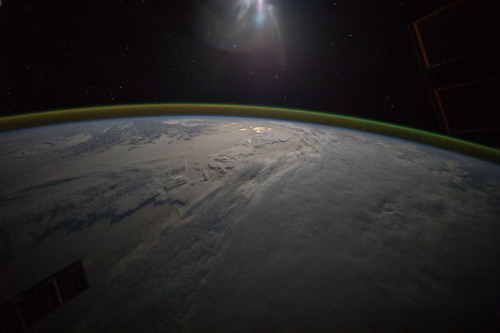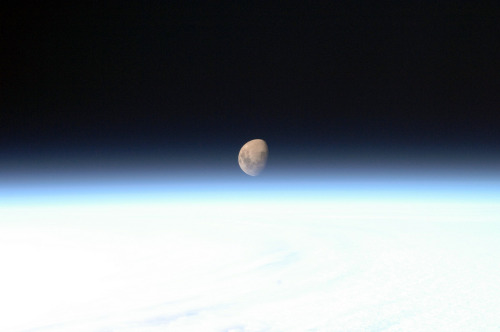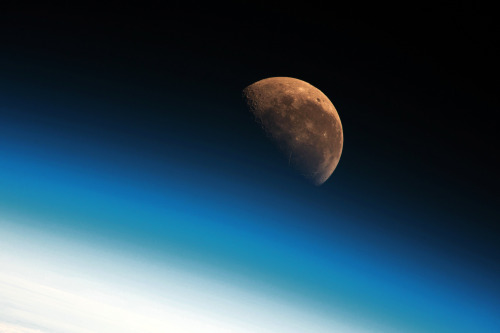A Super-Black Coating By Surrey NanoSystems.
A Super-Black Coating by Surrey NanoSystems.
This product absorbs 99.7% of light at 600nm wavelength. Unlike the previous product, VantaBlack, this product is much more tolerant and can withstand handling - indicating more realistic worldwide applications.
More Posts from Study-astronomy-biology-ref and Others






hubble’s panorama of the carina nebula, some 7500 light years away from earth, and about fifty light years in length here. stars old and new illuminate clouds of cosmic dust and gas, like the clumping hydrogen from which they were born.
the top star seen at the bisection of the first two panels, part of the eta carinae binary star system (most stars are in binary systems), is estimated to be more than a hundred times the mass of the sun - large enough to go supernoava in about a million years.
it also produces four million times as much light as the sun, and was once the second brightest star in the night sky. but surrounding dust and gas has dimmed our view of the star, though it’s still visible in the night sky to all but those in the most light polluted cities.
the fifth panel shows ‘the mystic mountain,’ where nascent stars in the dust cloud are spewing hot ionized gas and dust at 850,000 miles an hour. eventually, the ultraviolet radiation from these stars will blow away the dust, leaving visible the stars, like the cluster seen at the top of the panel, which were formed only half a million years ago.
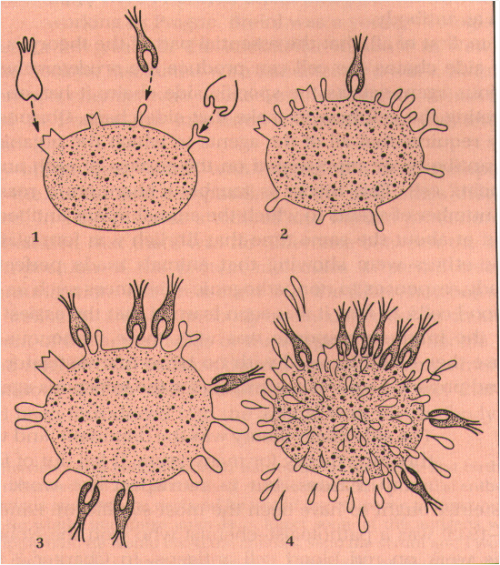
Antibodies are the secreted form of B-lymphocyte receptors and are a part of adaptive immunity, but how are these proteins formed?
Above is a diagram illustrating Paul Ehlrich’s Side Chain Theory of Antibody Formation. Ehlrich proposed that immunoglobulin molecules, a fundamental component of adaptive immunity, served as membrane bound proteins that bound to particular threats, similarly to the former “key in lock” view of enzymes in catalyzing biological reactions. Ehrlich also suggested that the action of binding a pathogenic molecule to the receptor would generate a signal to stimulate the production of more receptors of the same specificity. These “side chains” that were added on would then break off from the cell surface and become what we call antibodies.
We now know, however, that soluble immunoglobulin receptors are specially manufactured to be secreted as antibody, rather than just “breaking off” of the lymphocyte, even though they have the same specificity as their membrane-bound counterparts.
What is a "nebula"?
A nebula is a large cloud of dust and gas that are star-forming regions. They’re formed when a star dies and its outer layers expand, creating a colourful cloud of gas. In other cases, they’re formed when a star goes supernova (when a really big and bright star dies and explodes).
There are emission nebulae, reflection nebulae and dark nebulae. Emission nebulae are close enough to a star that the gas particles absorb the UV light, get excited and emit their own light. Reflection nebulae are when a nebulae isn’t close enough to a star to absorb it’s UV light so it just reflects it. Dark nebulae aren’t close enough to a star to either absorb it’s light nor reflect it. The only way a dark nebulae is visible is if there’s a star behind it that can act as a backdrop, illuminating the back of the nebulae.

The Lagoon Nebula - M8 in Infrared
The Lagoon Nebula (also known as Messier 8/M8 or NGC 6523) is a giant interstellar cloud and emission nebula located in the constellation Sagittarius approximately 5,000 light-year from earth. The nebula contains a number of Bok globules, which can be seen as dark, collapsing clouds of gaseous material. This Particular image shows a star forming central region in infrared and was captured by the VISTA telescope at ESO’s Paranal Observatory in Chile.
Credit: ESO/VISTA

Would It Be A Bad Thing to Wipe Out A Species … If It’s A Mosquito?
Mosquitoes have a nasty reputation.
The species Aedes aegypti, for example, is currently responsible for spreading the Zika virus through the Americas and also infects humans with dengue fever, chikungunya and yellow fever.
This raises the question: Should there be an effort to get rid of Aedes aegypti for good?
“There’s been lots of debate in the last 10 years whether we should eradicate mosquitoes, or at least the 100 species or so that serve as disease vectors for humans,” says David Magnus, director of Stanford University’s Center for Biomedical Ethics. “If you look at the science, the majority [of scientists] think we could probably eliminate mosquitoes without too much harm on the environment.”
Read the full story here.
Illustration: Matthew Twombly

Some galaxies have extremely bright cores, suggesting that they contain a supermassive black hole that is pulling in matter at a prodigious rate. Astronomers call these “active galaxies,” and Hercules A is one of them. In visible light, Hercules A looks like a typical elliptical galaxy. In X-ray light, however, Chandra detects a giant cloud of multimillion-degree gas (purple). This gas has been heated by energy generated by the infall of matter into a black hole at the center of Hercules A that is over 1,000 times as massive as the one in the middle of the Milky Way. Radio data (blue) show jets of particles streaming away from the black hole. The jets span a length of almost one million light years.
Credit: X-ray: NASA/CXC/SAO, Optical: NASA/STScI, Radio: NSF/NRAO/VLA

This is a 392 year old shark that was recently discovered in the Arctic Ocean.
This guy was wandering the oceans back in 1627 🦈
-
 kristenrxsdkq liked this · 4 years ago
kristenrxsdkq liked this · 4 years ago -
 hiphop32065 liked this · 4 years ago
hiphop32065 liked this · 4 years ago -
 unadvisedfolks4mgh8 reblogged this · 4 years ago
unadvisedfolks4mgh8 reblogged this · 4 years ago -
 unadvisedfolks4mgh8 liked this · 4 years ago
unadvisedfolks4mgh8 liked this · 4 years ago

This is a studyblr for everyone have some passion for science, especially astronomy and biology
129 posts
